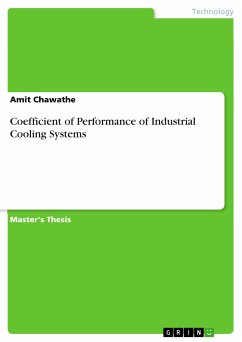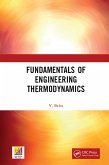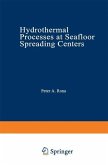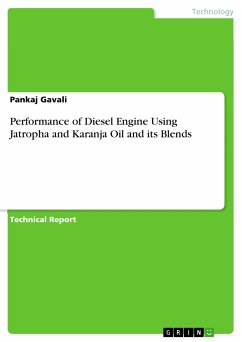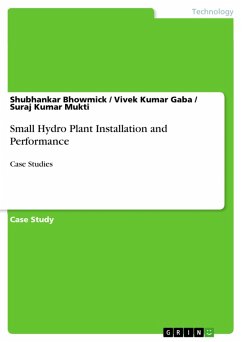Master's Thesis from the year 2020 in the subject Engineering - Mechanical Engineering, grade: 3.4, Rutgers The State University of New Jersey, language: English, abstract: Chiller plant systems often have the highest consumption of energy in a facility. Hence, it becomes essential for estimating the coefficient of performance (COP) of an industrial cooling system to ensure efficient use of resources. Various chiller plant systems have been analyzed to establish techniques or methodologies for determining the COP. Performance degradation with age and recent new technologies create an enormous range of COPs from 2 to 8 or more. After analyzing, it is found that the critical parameter for determining the COP of any type of chiller plant system is the mass flow rate. Remarkably, many industrial cooling systems do not measure mass flow rate in any part of the chilled water system and therefore cannot calculate COP. Good energy efficiency practice then requires that techniques be developed to estimate mass flow rate in industrial cooling systems in situ, without shutting down the system and installing measurement equipment. Three methodologies have been examined for measuring the mass flow rate of the condenser water loop. The first method looks at the cooling tower part of the condenser water loop to determine the mass flow rate of the condenser water by isolating some of iii the valves. The second method makes use of pump curves with relation to the differential pressure to calculate the flow rate of either the chilled water or the condenser water. Lastly, an ultrasonic flow meter is considered as a means to determine the flow rate in a running system. The mass flow rate is then used in the estimation of COP of the chiller cooling tower system.
Dieser Download kann aus rechtlichen Gründen nur mit Rechnungsadresse in A, B, BG, CY, CZ, D, DK, EW, E, FIN, F, GR, HR, H, IRL, I, LT, L, LR, M, NL, PL, P, R, S, SLO, SK ausgeliefert werden.

